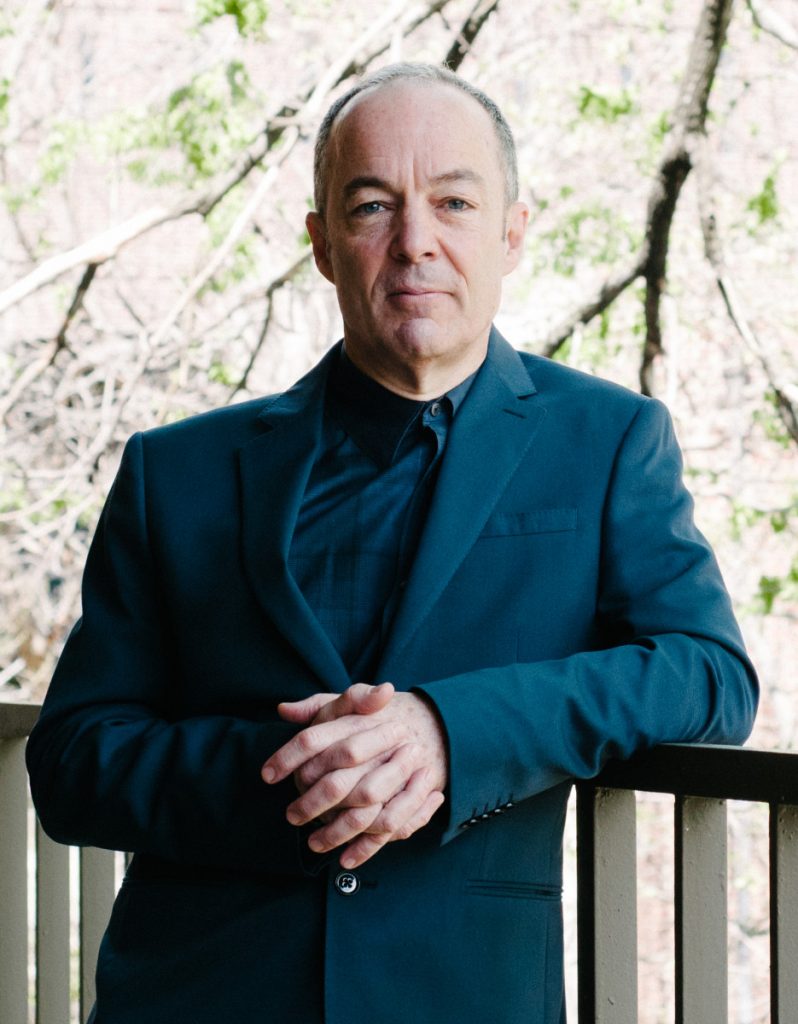Home is where one can take refuge from the world’s threats, one of the most pervasive being climate change. As the environment produces more extreme weather conditions, like wildfires and floods, the shelter humans reside in creates a feeling of safety from the dangers of the outside.

The places people call home, however, are contributing to these severe weather events and the issue of climate change in a big way; American homes produce one-fifth of all carbon emissions in the United States.
As world leaders navigate climate change, the question remains: How can houses be more sustainable while also shielding individuals from the harsh conditions of the changing climate?
A panel of sustainability leaders addressed that question last Monday afternoon in Smith Wilkes Hall, examining what the role of the home should be in terms of climate change solutions in a special lecture for the Chautauqua Climate Change Initiative, titled “Taking Shelter and Building Community: Redefining Home in a Climate Action World.”
The speakers included William W. Braham, professor of architecture and director of the Center for Environmental Building & Design at the University of Pennsylvania; Martha Bohm, associate dean for academic affairs and associate professor with the department of architecture at the University of Buffalo; and Ryan A. McPherson, chief sustainability officer at the University of Buffalo. Chautauqua’s Climate Change Initiative Director Mark Wenzler moderated the Q-and-A portion of the event.

Braham first took the stage to explore what the roles of buildings are, and should be, in society.
Buildings allow people to gather, Braham said, to contribute to both the economy and the community.
He proposed three components one can use to evaluate the importance of architecture. The first is the site — locations are the real value of a building.
“The building that you can build is determined by the value of the location,” Braham said. “Inversely, the value of the location is determined by the buildings that are already built. … This is something we understand, but we think of it almost as a static property that is constantly changing.”
Shelter is the second asset Braham discussed. This includes heating, cooling, ventilation and lighting.
The third, and what Braham said was “possibly the most important,” is the internal setting, or the way in which people live, work, cook and clean in a space.
“It’s the stuff that happens inside (the home) that really drives huge amounts of consumption … that can cause the problem that we take for granted,” Braham said, referring to the total gas emissions from American homes.
Braham shared several innovative buildings on the projector screen behind him, exemplifying the importance of architecture that reflects both the climate and human needs.

Following Braham’s talk on building evaluations, Bohm took the lectern to discuss how behavior inside the home is just as crucial in combating climate change as the outside architecture of a home.
“The work of architects is to provoke conversations in our community,” Bohm said, “not only to do the good work of making buildings perform better, but to galvanize public consciousness, to talk about the meaning of the image of art, and what they communicate about our values. We need to think about what our buildings are doing to the planet and what the climate will, in turn, do to us.”
Bohm pointed to modernized smart homes that promote a high-tech lifestyle with little environmental consideration.
“Notice how our modern buildings, in particular, allow us to decouple ourselves from our relationship to the outside,” Bohm said. “The modernist need for their sleek skyscrapers, technologies of glass elevators, … all those technologies that make our modern buildings work, allow us to separate ourselves from the outside.”
In response to the smart home, Bohm created a prototype house with University of Buffalo students in a design competition. The “Grow” home, as it was named, was built to recognize energy hierarchy, think fundamentally and coexist with nature.
Features of the home include a “growlarium,” a part-greenhouse, part-solarium area of the house enclosed with tempered glass, allowing the sun to pass through. This space enables plants to grow inside the home, while also serving as a multifunctional space for dining, relaxing or other leisure activities.
Bohm said that spaces like the growlarium allow for myriad uses and encourage flexibility in how rooms are used.
The greenhouse increases access to homegrown food, as homeowners could harvest vegetables and fruits within the confines of the growlarium.
“Bringing that food production into the home is a way to take on the challenge of energy and climate effects more seriously,” Bohm said. “This glassy space viewable from the outside sends that signal to neighbors, who will know you’re raising food. It indicates the importance and the centrality of that production.”
The “Grow” home aims to expand the boundaries of what a home entails.
“It’s a new way of thinking about what being in the home requires,” Bohm said. “This means that the house is anything but a smart home. This is not a house which does it for you. But, it gently guides you to become a smarter user of the home, and to develop a cleaner awareness of the exterior environment.”
Bohm’s University of Buffalo colleague McPherson concluded the lecture portion of the event with a discussion on what individuals can do to combat climate change.
McPherson discussed a partnership with a landscape architect which uncovered three ways individuals can mitigate their effects on the environment. The first was to be a steward for water, harnessing and reusing it for clean energy. The second was to adopt a role of resilience and self-sustainment, which would entail growing one’s own food in a garden. The third was to look at climate change as a market opportunity, where the community can establish space and support systems for climate-adaptive crops.
“I think focusing on our classic definition of ‘home’ is where you start and where you spend your individual (time),” McPherson said. “I think we should think about the larger definition of home, and one way to think about it is this beautiful flow — that we are all citizens and passengers.”
McPherson ended his talk by asking the audience to think of their “second” home.
“What is your second home?” McPherson asked. “Where is a place that you have influence over? I ask you to think about how you might think about this work and how it exemplifies itself, how we’re looking forward to (taking) action.”
After a panel discussion, all three speakers reminded Chautauquans home is where individual change begins in the fight against climate change.
“Our homes and what we do in them send the signal — the signal that we send into the world about what we value and what we hold sacred,” Bohm said. “We cannot underestimate that part of the work that we’re doing. We have to grapple with both the technological and the aesthetic and behavioral aspects of how spaces look and feel.”




